Картки "Charvat Current political extremism" | Quizlet
1/61
There's no tags or description
Looks like no tags are added yet.
Name | Mastery | Learn | Test | Matching | Spaced |
|---|
No study sessions yet.
62 Terms
Definition of extremism
Extremism refers to ideologies or actions that are far from the political center, often characterized by intense commitment to a specific viewpoint. It is seen as being on the furthest ends of the political spectrum.

Types of extremism
- In the USA, extremism is often associated with violent actions.
- In Europe, a person can be labeled as extremist even if their actions are non-violent but their views are extreme.
Historical context of extremism
- The term started gaining attention in the 1960s (scholars like Eric Hoffer and Arthur Schlesinger).
- Originally, it was mainly applied to far-right groups.
Definition of radicalism
- Radicalism means addressing the root causes of problems.
- Historically, in the 19th century, radicalism was associated with secularism and liberalism.
Definition of populism
- Derived from the Latin word populus (the people), populism revolves around representing the "ordinary people."
- It often contrasts the "pure people" (e.g., working class) with the "corrupt elite" (e.g., capitalists, political elites).
Three Views on Populism:
- An ideology (a coherent set of political ideas).
- A weak ideology or doctrine that complements stronger ideologies.
- Not an ideology at all, but rather a communication strategy.
Main differences between extremism and radicalism
The main difference is that extremism often involves intolerant, uncompromising, and potentially violent actions to achieve its aims, while radicalism seeks deep and systemic reform while remaining within constitutional and lawful boundaries. Radicalism is not inherently anti-democratic, whereas extremism often challenges democratic values.
- Radicalism: Accepts violence as a means to achieve goals.
- Extremism: Rejects democracy, promotes social hierarchies, and discriminates based on ethnicity or race, creating "in-groups" and "out-groups."
Hans Kohn defined modern nationalism in two types:
- German Model (Ethnic Nationalism): Based on shared language, culture, and history (exclusive, leads to conflicts).
- Civic Nationalism (Western Europe): Inclusive, welcomes all regardless of ethnicity.
Goals of Imperialism
- Economic motives: Access to cheap resources and markets.
- Ideological motives: Religious conversion, "civilizing missions," and racial hierarchies.
- Mass nationalism and imperialism surged in the 1880s with European colonization of Africa (Scramble for Africa).
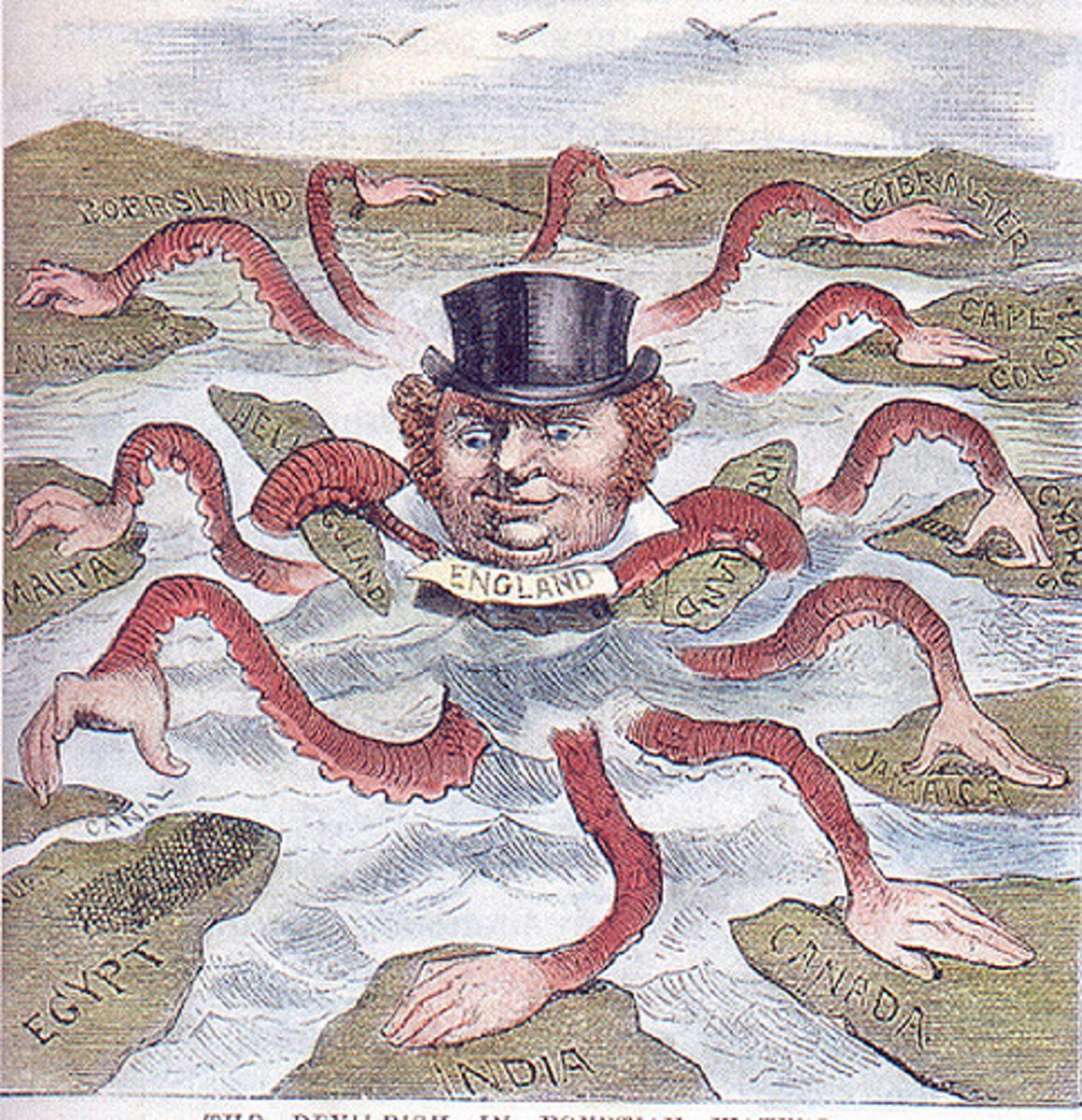
Origin of the term right and left
The terms left and right originated during the French Revolution (1789-1799). Specifically:
National Assembly Seating: In the early stages of the revolution, members of the French National Assembly (established in 1789) physically sat in different areas of the chamber based on their political views:
- Those who supported radical change, equality, and were against the monarchy sat on the left.
- Those who supported tradition, the monarchy, and maintaining the existing social hierarchy sat on the right.
Traditional Political Spectrum in the USA
The political spectrum in the U.S. typically divides between conservatives (right) and liberals (left).
Conservatives emphasize tradition, smaller government, and free markets, while liberals focus on equality, individual rights, and social welfare.
Horseshoe Theory
Suggests that the far left and far right, despite being on opposite ends of the political spectrum, can sometimes resemble each other in terms of extremism and authoritarian tendencies.
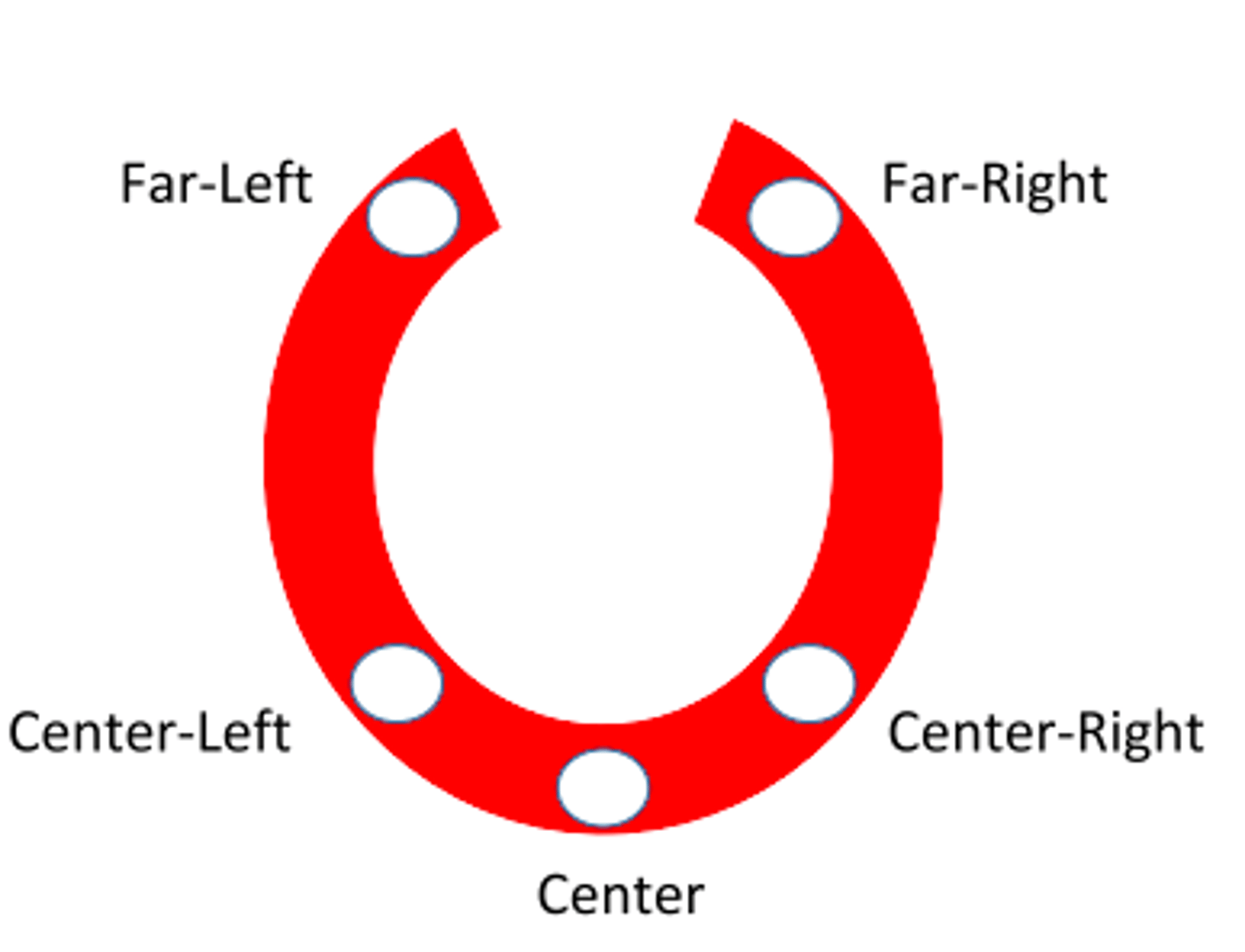
Political Compass
A two-dimensional model to represent political ideologies:Economic axis: Left (economic equality) vs. Right (free markets).Social axis: Authoritarian (strict control) vs. Libertarian (personal freedom).

The ideological triangle = Moderate Ideologies
Include liberalism, socialism, and conservatism
Definition of liberalism
Liberalism is a political and philosophical ideology that emphasizes individual freedom, equality before the law, democratic governance, and the protection of civil liberties, advocating for limited government intervention in personal and economic affairs while upholding the rule of law and human rights.
- Founded by John Locke.
- Core ideas: individual freedom, rule of law, and elected governments.
- Promotes personal and political rights and free markets.
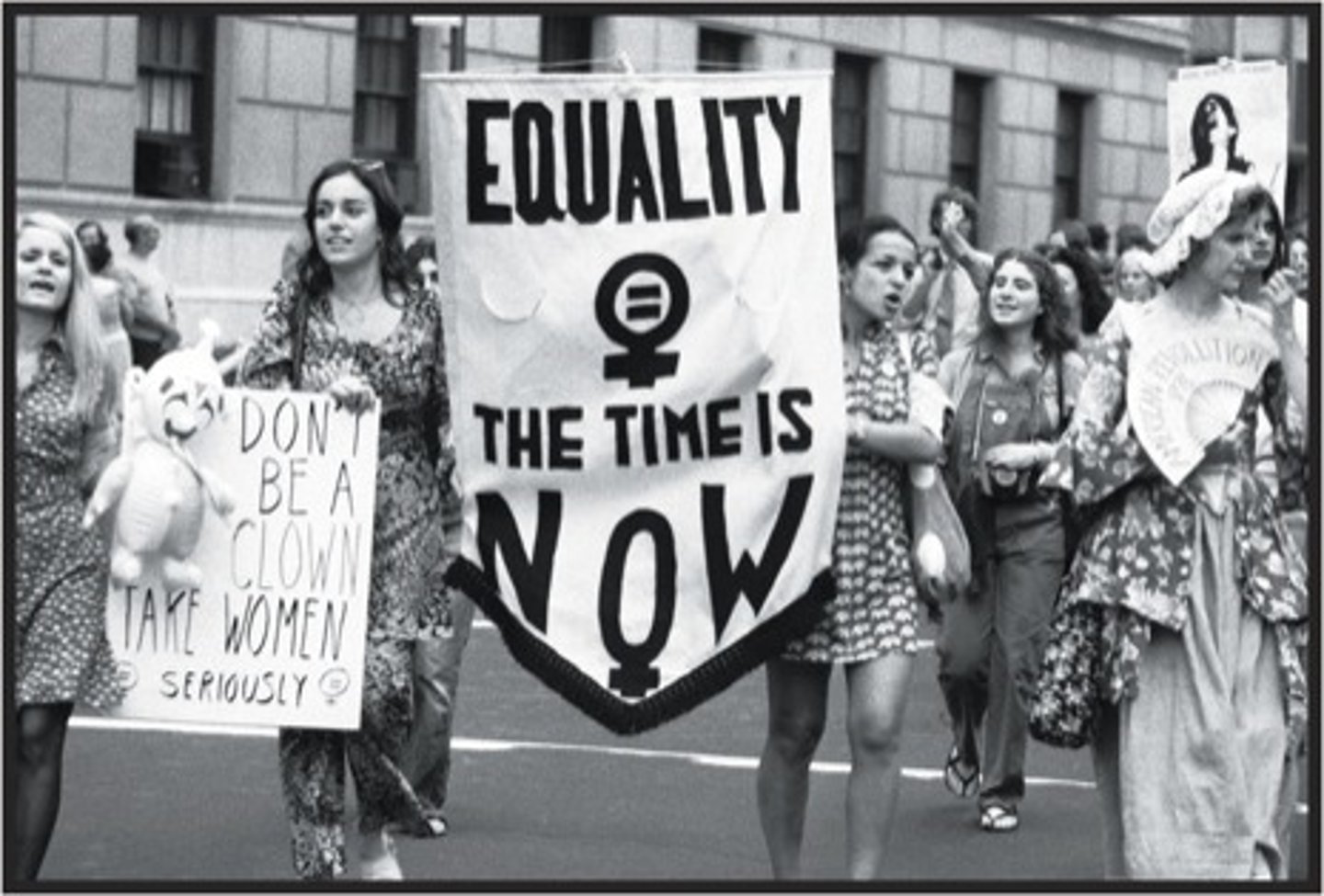
Definition of socialism
Socialism is a political and economic ideology that advocates for social and economic equality through collective or governmental ownership and regulation of the means of production, distribution, and exchange, aiming to reduce class disparities and ensure equal access to resources and opportunities for all members of society.
- Focuses on economic equality and communal ownership.
- Advocates for equal taxation and protection of minority rights.
- Aims to address worker and social inequalities.
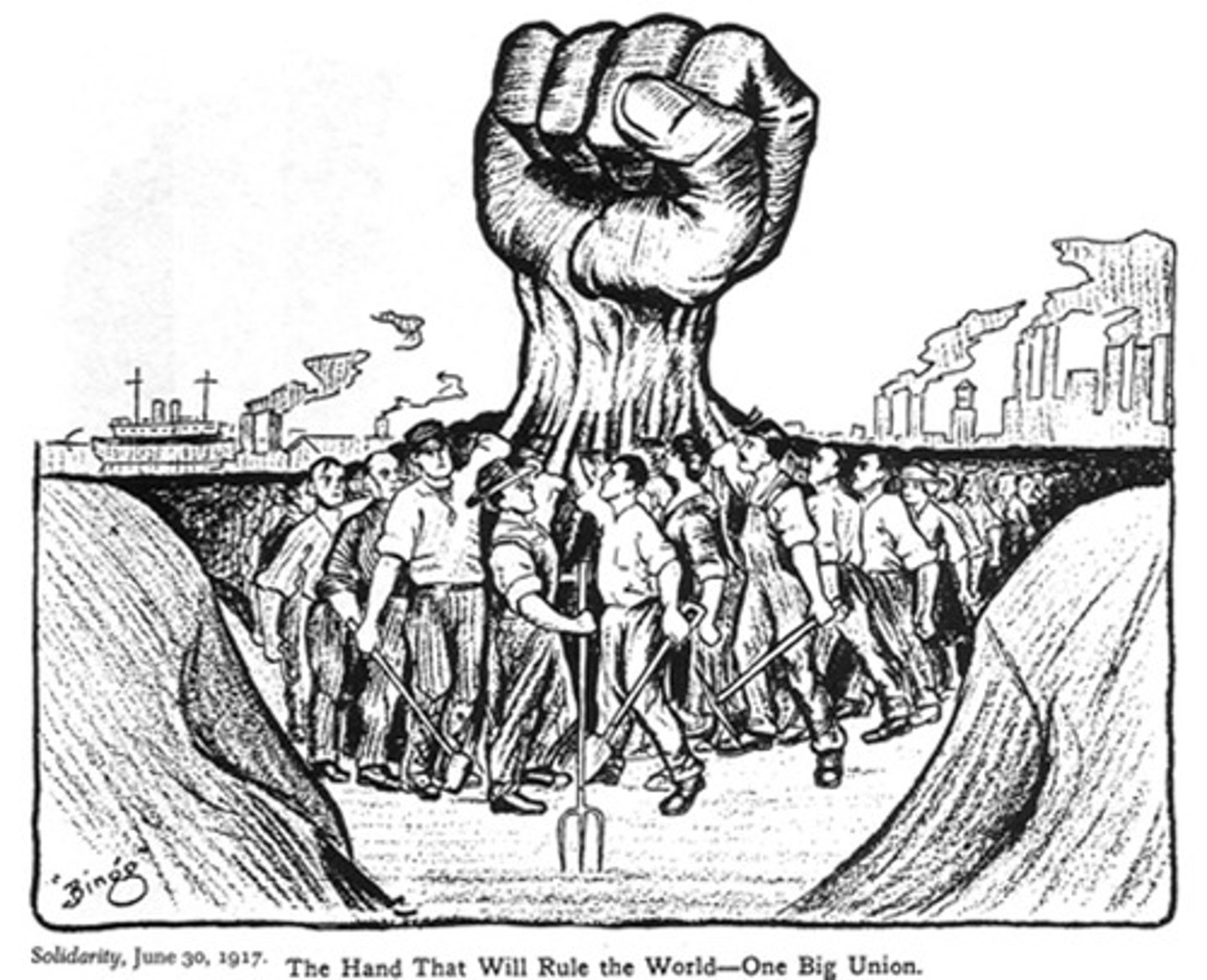
Definition of conservatism
Conservatism is a political and social ideology that emphasizes the value of tradition, established institutions, and gradual change, advocating for the preservation of cultural heritage, social hierarchy, and stability within society, often resisting radical reforms or revolutionary shifts.
- Based on tradition and hierarchy, emphasized by Edmund Burke.
- Values institutions like the state and church, which have endured over time.
- Believes societal order depends on natural hierarchies.
- Burke argued that politics should remain in the hands of the aristocracy, not ordinary citizens.
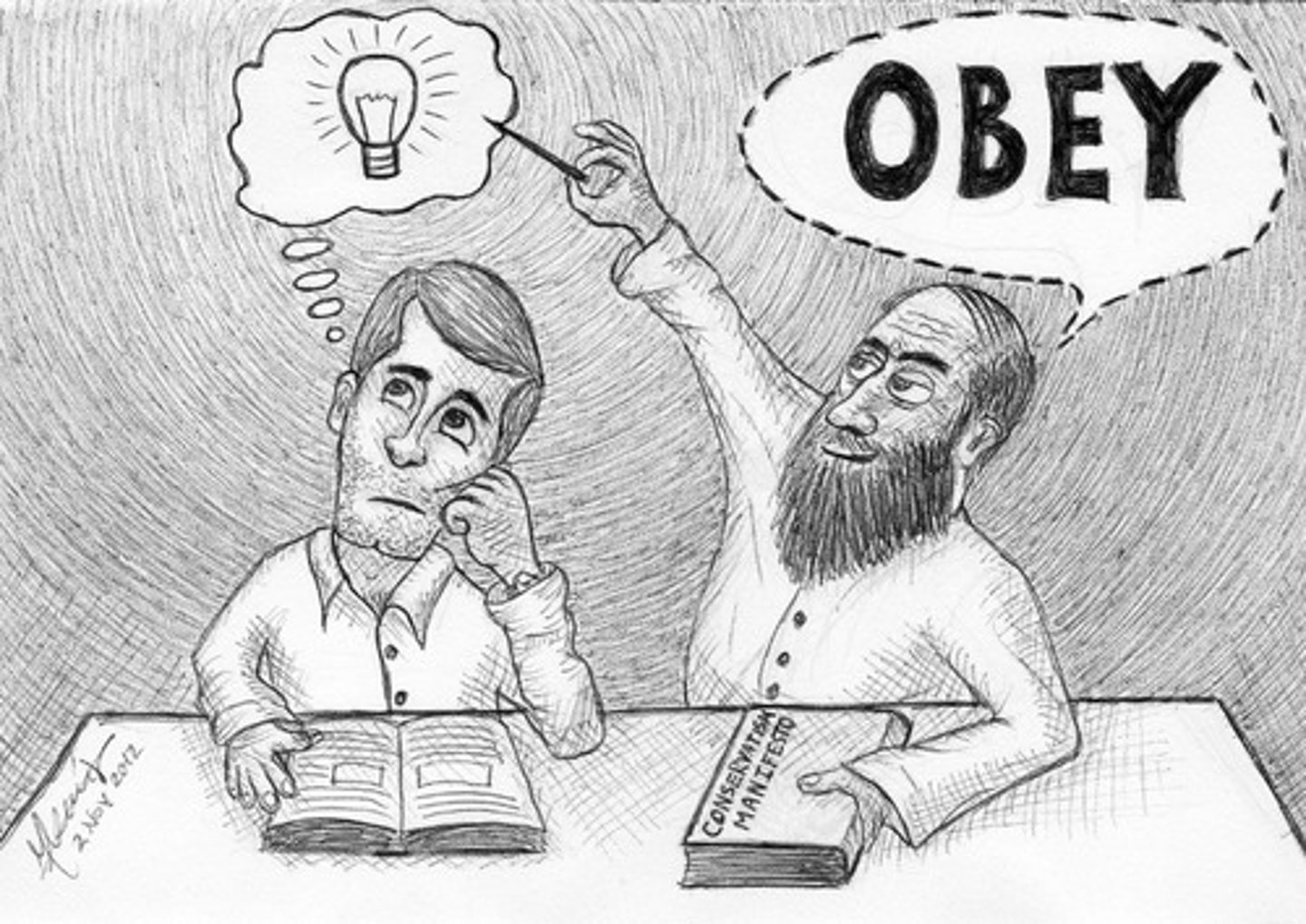
19th-Century Ideological Conflicts
- Liberalism dominated the early 19th century, emphasizing political freedom and free markets.
- Socialism rose in response to growing economic inequalities, driven by Karl Marx's ideas.
- The divide between conservatives (status quo), liberals (free markets), and socialists (economic justice) created the modern political spectrum.
- The late 19th century saw nationalism rise, leading to conflicts and wars.
New Liberalism
Neoliberalism is an economic and political ideology that emphasizes free-market capitalism, deregulation, privatization, reduced government intervention, and the primacy of individual entrepreneurial freedoms, often advocating for policies that prioritize economic efficiency and global trade over social welfare and public ownership.
- After WWII, social liberalism emerged, combining free markets with social welfare.
- This became the foundation of the welfare state, particularly successful in Europe during the 1950s-60s.
- By the 1970s, criticism of social liberalism emerged, leading to neoliberalism (emphasizing free markets over welfare).
- Liberalism split into left-liberalism (social focus) and right-liberalism (economic focus).
Types of liberalism
- Classical Liberalism: Advocates for minimal government intervention, free markets, and individual rights, emphasizing economic and political freedom.
- Social Liberalism: Seeks to balance individual liberty with social justice, advocating for government involvement in addressing inequality through welfare systems and public services.
- Economic Liberalism: Prioritizes free trade, open markets, and minimal regulation, arguing that economic freedom leads to prosperity.
- Political Liberalism: Focuses on the protection of civil liberties, democratic governance, rule of law, and equal rights under the constitution.
- Cultural Liberalism: Emphasizes the importance of personal choices, tolerance, and diversity in societal and cultural contexts.
- Neoliberalism: Advocates for globalization, deregulation, and market-driven policies while maintaining the importance of economic freedom over government control.
Far Ideologies
- Communism (~socialism): Advocates complete economic equality and the abolition of private property.
- Fascism/Nazism (~conservatism): Emphasizes hierarchy, nationalism, and authoritarian control, rejecting equality.
- Anarchism (~liberalism): Advocates for a stateless society with absolute personal freedom.
Definition of anarchism
Anarchism is a political ideology and philosophy that advocates for the abolition of hierarchical authority and centralized government, seeking a society based on voluntary cooperation, mutual aid, and self-governed communities without coercive institutions.
- An ideology opposing all forms of oppression and rule.
- Emerged in the late 18th century.
- Anarcho-individualism: Focuses on individual freedom, influenced by thinkers like Josiah Warren and Benjamin Tucker.
- Anarcho-collectivism: Advocates collective ownership, championed by Mikhail Bakunin.
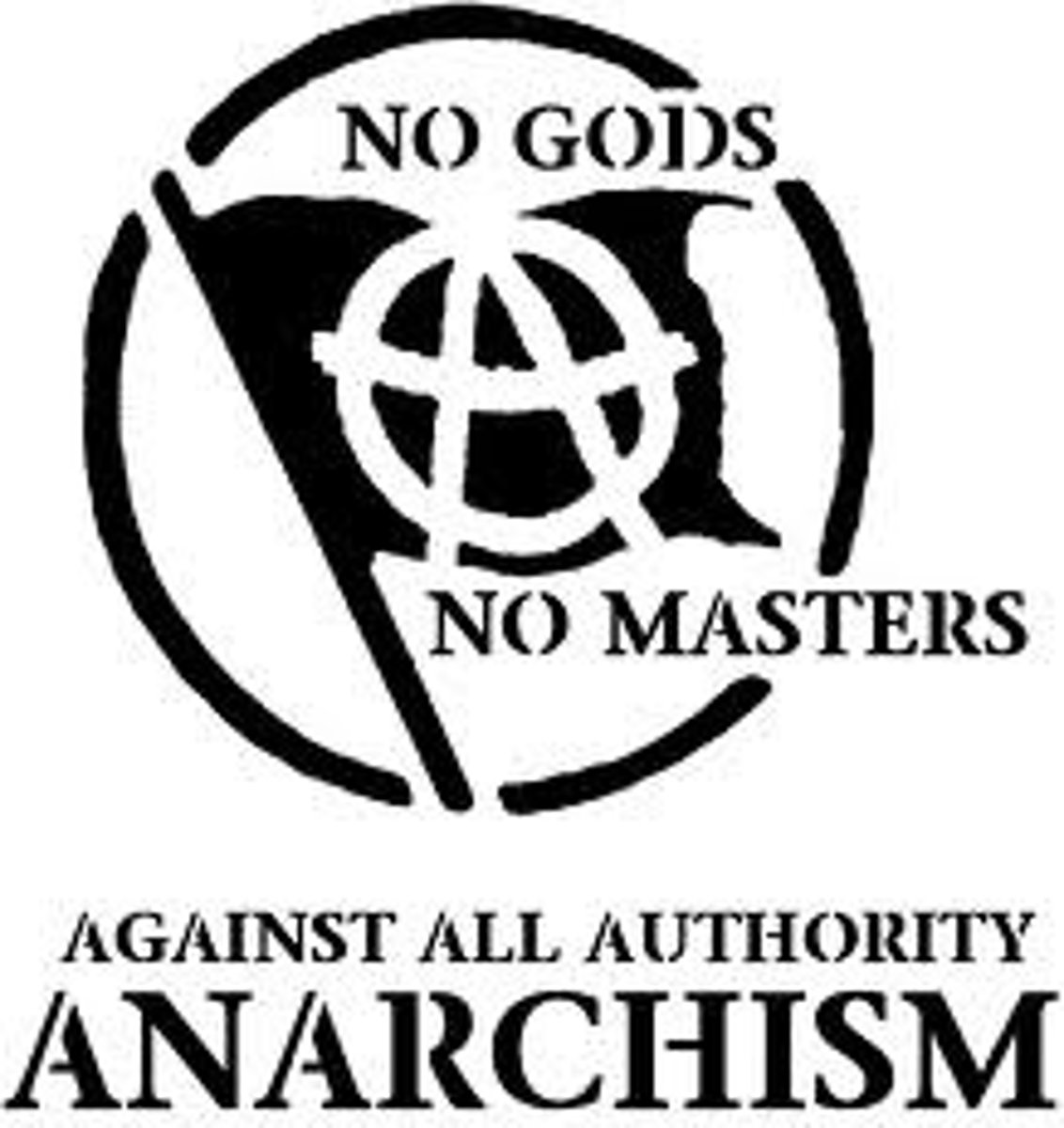
Definition of communism
Communism is a political and economic ideology that advocates for the abolition of private property and class distinctions, aiming to create a society where resources and means of production are collectively owned and controlled. It seeks to establish economic equality and social justice by eliminating exploitation of the working class (proletariat) by the capitalist class (bourgeoisie). Communism envisions a classless society where all individuals have equal access to resources and opportunities, with the goal of achieving a stateless, moneyless, and classless world. The idea is most famously articulated by Karl Marx and Friedrich Engels.
- Core Idea: Communism addresses the class division between workers (proletariat) and capitalists (bourgeoisie).
- Private Property: Central to the ideology is the abolition of private property to achieve equality.
- Karl Marx's Vision: Marx envisioned a worker-led revolution but saw the state as a tool for this change, not something to abolish immediately.
- Lenin's View: Lenin emphasized a vanguard party (a small, elite group) leading the revolution on behalf of the workers.
- Stalin's Modification: Stalin shifted to "socialism in one country," focusing on building a strong Soviet Union first, which deviated from Marxist-Leninist principles.
- Equality: Communism's primary focus is achieving social and economic equality.

definition of fascism and nazism
Fascism is a far-right political ideology that emphasizes authoritarianism, nationalism, and the supremacy of the state. It advocates for a centralized, dictatorial government led by a single leader or party, often rejecting democracy and individual freedoms. Fascism promotes social order through strict control, hierarchy, and the suppression of political opposition. It typically emphasizes national unity, militarism, and the idea of a powerful, unified nation-state. While it does not necessarily include racial ideology.
Nazism (National Socialism), a form of fascism, is an extreme, racist variant that was promoted by Adolf Hitler and the Nazi Party in Germany. It is characterized by a belief in racial purity, with a focus on the supremacy of the "Aryan" race and the exclusion or extermination of other races, particularly Jews. Nazism incorporates all the elements of fascism, such as authoritarianism and nationalism, but goes further by making racism and antisemitism central to its ideology. It promotes the idea of a totalitarian state that controls all aspects of society and culture, using violence and terror to achieve its goals.
- Shared Foundation: These ideologies stem from similar conservative principles but are more radical.
- Core Idea: Fascism and Nazism emphasize inequality and hierarchy
- Three Pillars:
1. Integral Nationalism: A concept where individuals are subordinate to the nation's collective destiny.
2. Authoritarianism: Power is centralized, and inequality is seen as natural.
3. Totalitarian State:
- Fascism: Focuses on the importance of the state and its control over society. It may or may not involve racism (e.g., Italian Fascism included colonial subjects under Italian rule).
- Nazism: Centers on racial purity and supremacy, envisioning a future where non-Aryans would be subjugated or eliminated.

Definition of radicalisation and factors leading to the radicalisation
- Definition: The process by which individuals shift from moderate views to extreme positions advocating violence.
- Factors Leading to Radicalization:
1. Push Factors: Societal injustices, discrimination, and marginalization.
2. Pull Factors: Personal needs for belonging, identity, and purpose. Peer groups and media often reinforce these.
3. Contextual Factors: Broader socio-political environments can fuel extremism.
Theoretical Approaches to Right-Wing Extremism
1. Theories of Totalitarianism: Study of authoritarian leaders like Hitler and Mussolini.
2. Marxist Approach: Views fascism as a product of capitalism (David Renton).
3. Historical Approach: Fascism seen as specific to a historical period (Ernest Nolte).
4. Anti-Modernism approach: Fascism as a backlash against the French Revolution and modernity (Roger Griffin, Noel O'Sullivan).
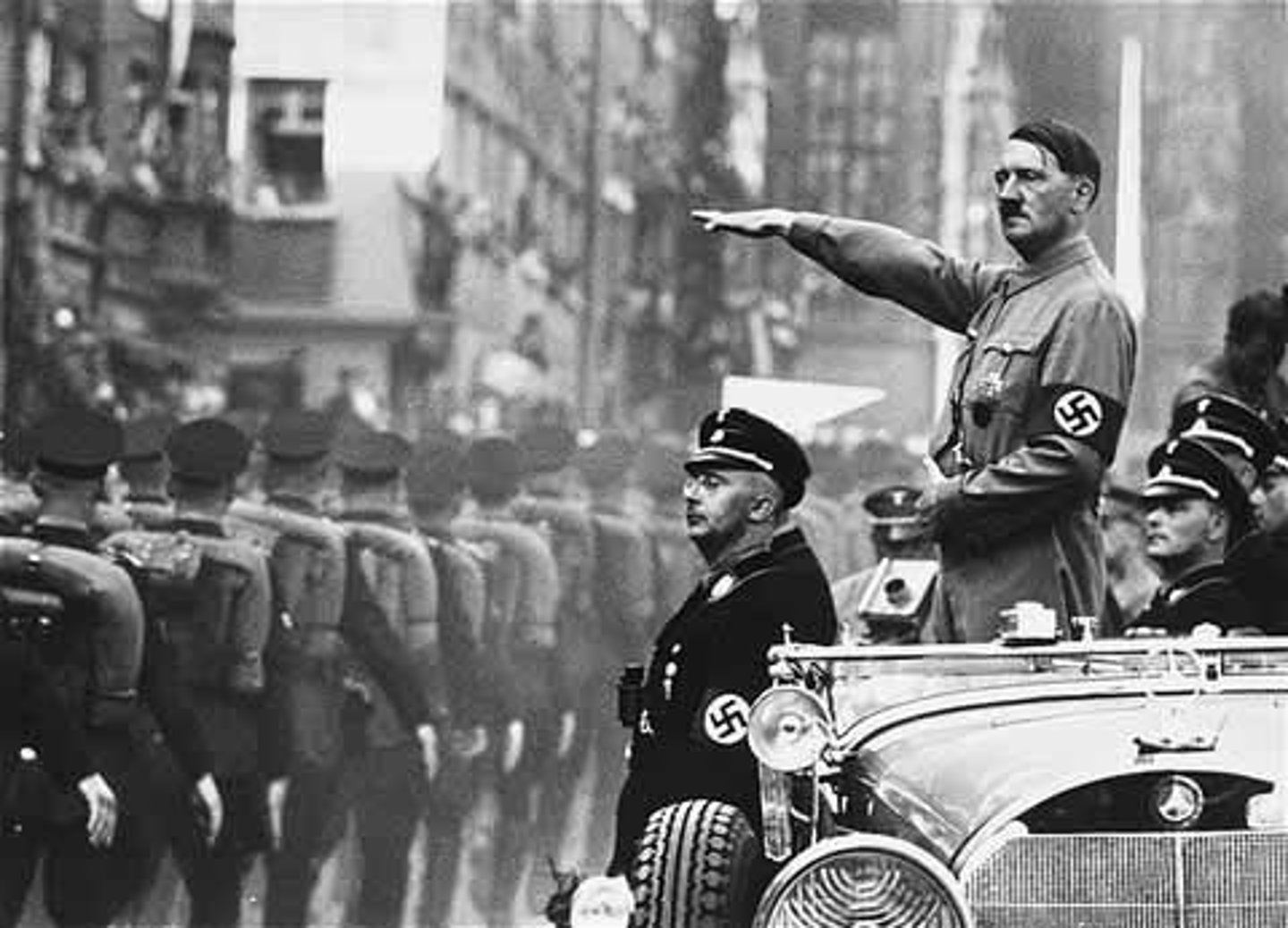
Definition of anarcho-capitalism and anarcho-collectivism
Anarcho-Capitalism is a political philosophy that combines anarchism and capitalism. It advocates for a society without a state, where private property and free-market capitalism are the basis of social organization. Anarcho-capitalists believe that individual liberty and voluntary transactions should govern all aspects of life, including the economy, and that private businesses would replace state functions such as law enforcement, security, and infrastructure. The idea is that competition in a free market would naturally lead to prosperity and protect individual rights without the need for government intervention.
Anarcho-Collectivism is another form of anarchism, but it emphasizes collective ownership and control of the means of production. Instead of private ownership, anarcho-collectivists advocate for shared ownership, where workers manage and control industries and resources cooperatively. The goal is to abolish capitalism, class distinctions, and private property in favor of a stateless, egalitarian society based on mutual aid and collective decision-making. Anarcho-collectivism seeks to establish a system where people work together for the common good and distribute resources based on need rather than profit.
Limited political style vs Active political style by Noël O'Sullivan in his book Fascism
Limited Political Style (as discussed by Noël O'Sullivan in his book Fascism) refers to a political system where society is held together by laws rather than a common ideological goal. In this model, there is a clear distinction between private and public life, and between the state and society. The state is viewed as a specific territorial unit, and safeguards against political power abuse are considered essential for a well-functioning society. O'Sullivan believed that political activism, in its more extreme form, developed after the French Revolution. Here, the state's power becomes more focused on ideology and collective goals.
Activist Political Style, in contrast, emphasizes the idea of a collective purpose. In this style, the bond between members of society is tied to a shared goal, often expressed in specific ideologies. This kind of politics is totalizing—meaning political power is seen as necessary for government and the existence of nations. Political borders are determined not just by geography, but ideologically, which leads to more expansive definitions of the state.
Theoretical Contributions by Noël O'Sullivan
Ideas from the French Revolution:
1. A New Theory About the Origin of Evil:
- In medieval times, evil - an intrinsic part of human life.
- Rousseau's philosophy - that humans are born good but corrupted by society.
- O'Sullivan - an equal society would eliminate the root of evil. In this context, the fight against evil becomes a collective struggle. If societal injustices are removed, a utopian "paradise on earth" could be achieved.
2. The Doctrine of Popular Sovereignty:
- In the Middle Ages, power - granted by God to the king. The king's rule was divine, and challenging the king meant challenging God, which was a sin.
- The French Revolution introduced the idea that power come from the people. The people - true source of power and cannot oppress themselves. Rousseau argued for a republic where government serves the collective will, and this idea would later be used to justify fascism or communism, depending on who was considered part of the people.
3. A New Concept of Freedom as a Struggle:
- O'Sullivan: negative liberty (freedom "from" oppression) and positive liberty(freedom "for" collective well-being). In a revolutionary context, true freedom is tied to the well-being of the nation or class, often prioritizing collective goals over individual rights.
- For fascism, freedom is gained through struggle, and revolution is seen as essential for achieving true liberty. Hitler, utilized this concept in Mein Kampf, advocating for the importance of fighting for the freedom of the nation and purification of the people.
4. The Power of Human Will:
- The Middle Ages saw humans as having a fixed place in society, with limited ability to change their condition.
- Modernity, as O'Sullivan sees it, places emphasis on the individual's will to shape their own destiny.
Origins of Totalitarian Ideologies in Crisis or Upheaval by Sullivan
- Contextual Origins: O'Sullivan argues that ideologies like fascism arise during periods of profound societal change, often when traditional systems or values are challenged. In times of economic distress, political instability, or national humiliation, people become disillusioned with existing institutions and may turn to radical ideologies for answers.
- For example, after World War I and the Treaty of Versailles, Germany faced economic ruin and humiliation, creating fertile ground for fascist ideas. The same dynamic can be observed in other countries facing economic depression or political instability, where traditional forms of governance were seen as ineffective.
- Reaction to Crisis: Totalitarian ideologies often emerge as reactions to perceived societal failures. In the case of fascism, its rise was a response to the perceived failures of liberal democracy, communism, and the economic systems that had previously been in place. In this sense, the ideology can be seen as an effort to reassert order, stability, and national pride during chaotic times.
Origins of Anti-Semitism
The Term "Anti-Semitism": The term itself originated in the 19th century and was popularized by Wilhelm Marr in his book Der Weg zum Siege des Germanenthums über das Judenthum ("The Way to Victory of Germanism over Judaism"), published in 1879. Marr was the founder of the Anti-Semiten-Liga (League of Anti-Semitism) in 1880, which sought to promote the idea that Jews were a threat to the German nation.
Semitism refers to a family of languages, including Hebrew, Arabic, and Assyrian. Anti-Semitism specifically targeted Jews, focusing on their perceived differences, whether religious, cultural, or racial.
Stages of Anti-Semitism (first part)
1. Anti-Judaism: This is the earliest and longest-lasting form of anti-Semitism. It was primarily rooted in religious hostility toward Jews. Historically, this was based on the belief that Jews rejected the Christian notion of salvation (through baptism) and were thus seen as enemies of Christianity.
- The Church's Role: One of the main theological arguments against Jews was that they rejected Jesus Christ and were responsible for his crucifixion, leading to accusations of "deicide" (the killing of God).
- Popular Anti-Semitism: The people, too, were influenced by these religious ideas, which became intertwined with social and political narratives. Jews were often blamed for societal problems, such as economic crises and the Black Death. The most notorious myths included the blood libel, which falsely accused Jews of murdering Christian children and using their blood for rituals, and the notion that Jews were in league with the Devil.
Stages of Anti-Semitism (second part)
Anti-Semitism (Racial): Starting in the 19th century, anti-Semitism took on a racial aspect. Instead of solely focusing on religious differences, Jews were increasingly viewed as a distinct "race" or "ethnic group" that was biologically inferior to others. This was in part influenced by the rise of scientific racism and the development of pseudo-scientific theories about racial hierarchies.
- Conspiracy Theories: The infamous Protocols of the Elders of Zion, a fabricated document, played a significant role in spreading racial anti-Semitism. It promoted the false idea that Jews were conspiring to dominate the world.
- Jewish Emancipation: In the mid-19th century, Jews gained citizenship and legal equality in several European countries (Jewish emancipation), but this progress coincided with the rise of nationalism and a backlash against the Jewish presence in these societies.
- Political Abuse: Anti-Semitic sentiments were particularly evident in Russia, where Jews were often blamed for social unrest and revolution.
- Eugenics: The eugenics movement, which sought to "improve" the human race through selective breeding, was also used to justify anti-Semitic policies. Though the movement existed in various countries, Nazi Germany took it to extreme levels, leading to violent anti-Semitic actions.
Anti-Zionism (Post-WWII): After the establishment of Israel in 1948, opposition to the state of Israel, often in the form of anti-Zionism, emerged. Anti-Zionism is distinct from anti-Semitism in that it opposes the political movement of Zionism and the establishment of Israel rather than Jewish people as a whole. However, in practice, anti-Zionism has often been used as a cover for broader anti-Semitic attitudes, as criticisms of Israel have sometimes escalated into broader generalizations about Jewish people.
Key Themes in Anti-Semitism
- Religious Anti-Judaism: As mentioned earlier, religious anti-Semitism centered on theological disputes. The Fourth Council of the Lateran (1215) formalized many anti-Jewish laws, including the wearing of distinguishing clothes and the prohibition against owning land or joining guilds.
- Economic and Social Marginalization: Jews were often marginalized economically, with restrictions on land ownership and participation in various professions. One notable exception was usury (moneylending), which, although forbidden by the Christian Church, was an area in which Jews were often involved. This led to the perception of Jews as manipulative or exploitative, contributing to economic stereotypes.
- Ghettoization: Jews were often confined to segregated neighborhoods, known as ghettos, where they were isolated from the rest of society. This practice was widespread in medieval Europe and continued into the early modern period.
- Limpieza de Sangre: In Spain, the concept of "purity of blood" (Limpieza de Sangre) became a way of defining people as "Old Christians" (those without Jewish or Muslim ancestors). Jews (and Muslims) were seen as impure, leading to discrimination and persecution.
Modern Anti-Semitism
- Scientific Racism and Nazism: As scientific racism gained popularity in the 19th and early 20th centuries, Jews were increasingly viewed as biologically inferior. This racialization of anti-Semitism laid the groundwork for the extreme anti-Semitic policies of the Nazi regime.
- The Holocaust: The Holocaust was the horrific culmination of Nazi anti-Semitic ideology, in which six million Jews were systematically murdered in an attempt to "purify" Europe and eliminate the Jewish race.
- Z.O.G. (Zionist Occupation Government): A modern conspiracy theory that accuses Jews of controlling the world's governments through Zionist influence. It is an example of how anti-Semitic tropes have persisted in the 20th and 21st centuries, adapted to fit contemporary political contexts.
New Anti-Semitism and Anti-Zionism
After the war, a shift occurred in the form of anti-Semitism, evolving into what is often referred to as "New Anti-Semitism." with some important distinctions:
1. Holocaust Denial: Often associated with Neo-Nazis, Holocaust denial - the genocide of Jews during World War II either did not happen or was vastly exaggerated. Some denial narratives argue that if Hitler had known about the atrocities, he would have stopped them, or they claim that the death camps were not intended for mass extermination. Others suggest that the destruction of the death camps post-war proves the Holocaust did not occur
- One of the arguments in Holocaust denial - there is no written order or paper trail of Hitler's directives regarding the extermination of Jews, despite the evidence available from the Wannsee Conference, where Nazi officials discussed the "Final Solution"
- The claim that it was impossible to kill such a large number of people is another denial argument, despite substantial historical and forensic evidence confirming the scale and methods of mass murder, such as the use of Zyklon B gas, primarily associated with the gas chambers
2. Conspiracy Theories: Newer conspiracy theories, like QAnon, emerged in the 21st century. These theories claim that a "deep state" cabal controls world events, with accusations that Jews, or the state of Israel, are secretly orchestrating global affairs. QAnon, which began in 2017, claims that Donald Trump was working to dismantle this alleged deep state, involving illegal activities such as child trafficking
3. Israel and the Holocaust: A newer, controversial conspiracy theory - the state of Israel was created as a direct consequence of the Holocaust, implying that the event was used as a pretext for the establishment of Israel, and framing it in negative terms
Anti-Zionism
Anti-Zionism refers to the opposition to the ideology of Zionism, which advocates for the establishment and support of a Jewish homeland in the territory of Israel. It is often distinguished from anti-Semitism because it critiques the political entity of Israel rather than Jews as a people. However, when anti-Zionism crosses into hatred of Jews or denies the legitimacy of Israel's existence as a Jewish state, it can often be considered a form of anti-Semitism.
- Left-Wing Anti-Zionism: From the 1970s onwards, anti-Zionism gained traction among certain radical leftist movements, particularly those critical of capitalism and imperialism. These groups viewed Israel as an extension of Western capitalist oppression and imperialistic policies, which contrasted with the socialist ideals they espoused. Some leftists also criticized Israel for its relationship with the United States and its policies towards Palestinians.
- Kibbutz Movement: One of the aspects of early Israeli society that was heavily influenced by socialist ideals was the kibbutz system. The kibbutz, a collective farming community, was central to the early Zionist settlement in Palestine. However, the radical left's critique of Israel became more pronounced as the country evolved and integrated with global capitalist systems.
- Suez Crisis of 1956: The Suez Crisis is a key moment in Israeli history that highlighted the complex geopolitical relationships at play. In the crisis, Israel, aligned with Britain and France, fought against Egypt after Egypt nationalized the Suez Canal. This event demonstrated Israel's strategic alliances, particularly with the United States, signaling to the Soviet Union and the world that Israel would not stand isolated.
The 3D Test
The 3D Test was developed to distinguish between legitimate criticism of Israel and anti-Semitism masquerading as anti-Zionism. It identifies three behaviors that can mark anti-Zionism as anti-Semitism:
- Delegitimization: Denying the right of Israel to exist as a state. This form of anti-Zionism goes beyond criticizing Israeli policies or actions and attacks the very legitimacy of Israel's right to exist.
- Demonization: This involves portraying Israel as uniquely evil, often through comparisons with Nazi Germany or other extreme cases. Such comparisons are commonly made to create an image of Israel as morally equivalent to the perpetrators of the Holocaust.
- Double Standards: Holding Israel to standards that are not applied to other countries. This involves selectively criticizing Israel for actions or policies that are often overlooked in other nations, undermining Israel's legitimacy through an unequal application of criticism.
Racism and Its Roots
Racism is a belief in the inherent differences between races that justify unequal treatment and a system of privileges for one group over others. It can manifest in the legal, social, and economic systems, as well as in cultural and political ideologies.
- Racism is closely related to xenophobia, which is the fear or dislike of people from other countries or cultures. Xenophobia often overlaps with racial prejudice, as people fear or despise others based on perceived racial differences.
Colonialism and Two Views of the "Other"
- Colonialism historically involved the domination and exploitation of native populations by European powers. During this period, there were two dominant views of the colonized peoples:
1. The "Child" View: In British colonialism, natives were often seen as children in need of civilizing. This view portrayed colonized peoples as inferior but capable of eventual equality with Europeans through education and civilization. The idea was that they could progress and "grow" over time, reaching a higher level of development.
2. The "Beast" View: In contrast, some European powers, such as Germany and Belgium, viewed colonized peoples as fundamentally different from Europeans and incapable of being civilized. This view dehumanized them, often equating them with animals, and justified violent treatment and exploitation. This ideology laid the groundwork for extreme racism and was influential in the ideology behind the Holocaust.
Slavery and Racism
- In Europe, slavery was largely abolished by the 19th century, but it continued to thrive in the Americas due to the need for labor in the agricultural and plantation systems. The racial justification for slavery was based on a belief in the inherent superiority of white people over black people, a concept rooted in the "Curse of Ham" from the Bible, which falsely justified the enslavement of African people by interpreting their supposed curse as a divine decree.
- The Southern United States relied heavily on slavery, but it was in the North where racial animosity was most intense, as the relatively equal status of free black people threatened white supremacy. In the South, racial hatred was not as prevalent because slaves were considered property, not equals. The abolition of slavery, particularly after the Civil War, threatened the racial hierarchy and led to significant social and political upheaval.
- The baptism of slaves was sometimes seen as a form of liberation because it was believed that Christianity would "free" them, offering a form of salvation in exchange for their status as property.
The Rise of Scientific Racism
- Monogenism vs. Polygenism: The debate between monogenism (the belief that all humans share a common origin in Adam and Eve) and polygenism (the idea that humans originated from different ancestors) played a key role in racial theories. Monogenism suggested that all humans were equal, while polygenism reinforced the idea of racial hierarchies, suggesting that different "races" evolved separately and were inherently unequal.
- Carl Linnaeus and Johann Friedrich Blumenbach: These early scientists categorized humans into different "races" based on physical characteristics, which provided a pseudo-scientific justification for racism. Linnaeus created a classification system for humans, while Blumenbach developed the concept of five races: Caucasian, Mongolian, Ethiopian, American, and Malay.
- Joseph Arthur de Gobineau: Gobineau, a French aristocrat and writer, is often regarded as the father of modern scientific racism. His work, particularly "An Essay on the Inequality of the Human Races," argued that the decline of great civilizations was due to the mixing of races. He divided humanity into three main races—white, black, and yellow—and argued that "pure" races were superior. His theories were influential in both the development of eugenics and the justification for imperialism and colonialism.
Scientific Racism in the 19th Century
Scientific racism became institutionalized in the 19th century, with many scientists adopting the ideas of Gobineau and others. These racial theories were used to justify colonialism, slavery, and the unequal treatment of non-European peoples. They played a significant role in reinforcing the idea of racial superiority, particularly in European and American societies, and were later adopted by the Nazis to justify their policies of racial purity and the extermination of Jews and other marginalized groups.
Racism and Antisemitism
Racism and Antisemitism:
- Historically, Jews faced both religious and racial discrimination. While antisemitism is often linked with religious conflict (e.g., Christianity's view of Jews as responsible for the death of Jesus), it has evolved into a more deeply racialized form.
- Modern racism often ties racism to the idea of cultural superiority and territorial separation. This can be seen in arguments that suggest certain races should remain within their own geographic regions or that specific cultures are inherently superior to others (particularly European and Islamic cultures).
Nazism and Modern Racism:
1. Nazism represents the extreme form of European racism and antisemitism. The racial ideologies of Nazi Germany were not only about maintaining a "pure" race but also about aggressively pursuing the extermination or subjugation of non-Aryan peoples, particularly Jews.
2. Modern racism includes:
- Rationalism: Claims of racial equality while promoting the idea that races should be kept separate in different regions.
- Cultural racism: A more subtle form of racism that argues some cultures are superior to others, particularly European culture in relation to Islamic culture. If someone is born into a certain culture, they are believed to be incapable of changing it.
Racist Systems (George M. Fredrickson's Definition):
Racism is institutionalized through laws and policies that maintain racial hierarchies. Some of the characteristics of a racist system include:
- Official ideology: A belief system that justifies racial segregation.
- Legal segregation: Laws that enforce racial boundaries, such as apartheid in South Africa or the segregation of African Americans in the U.S. South before the 1960s.
- Denial of rights: The legal and social exclusion of non-white people, including denying them voting rights and economic opportunities.
Historical Examples of racist systems:
- John Brown: An abolitionist in the U.S. who fought against slavery and was supported by the Soviet Union due to his opposition to the U.S. government. His actions were part of the broader context of the American Civil War, where the North (Union) fought against the South (Confederacy), which wanted to preserve slavery.
- Jesse James: A notorious figure from the American Civil War and its aftermath. James fought against the Union and continued his resistance after the war, robbing banks to fund his anti-government activities. His legacy is still debated, with some in the South viewing him as a hero who fought against tyranny.
- Jim Crow Laws: After the Civil War, these laws institutionalized segregation and racism, especially in the southern United States, perpetuating racial inequalities.
Racism in Europe:
In Europe, racism was not only directed at non-whites, but also at different white ethnic groups. This could include discrimination between groups such as the Slavs, Jews, and Romani people. However, non-white populations were still often seen as the ultimate "other" in European racist ideologies.
Nationalism
1. Nationalism:
- Nationalism is closely tied to both racism and antisemitism, as it involves the belief that a nation (defined by shared culture, language, and history) is superior to others. Nationalism often serves to justify the exclusion or persecution of those seen as outsiders, including Jews or other ethnic minorities.
- Patriotism vs. Nationalism: While patriotism was historically seen as a positive force tied to love of country, nationalism has often been associated with exclusionary and supremacist ideologies. Nationalism, as a modern doctrine, emerged in the 18th century and was influential in the formation of European nations.
2. Nationalism in Europe:
- Nationalism arose alongside the formation of nation-states in Europe. It is often built on common language, geographical space, history, and culture. In places like the Czech Republic, nationalism was closely linked to the Hussite Revolution and the desire for national autonomy from foreign powers.
- The idea of nationalism can sometimes clash with ideas of inclusivity and equality, as national identity is often constructed around shared characteristics that exclude minorities.
Colonialism: "Children vs. Beasts" Debate
During the colonial period, two contrasting views shaped European attitudes toward non-European populations:
1. "Children" Perspective:
- Belief that natives outside Europe were human but underdeveloped.
- Seen as "children" needing education and "civilization" by Europeans.
- Especially prominent in British colonialism, this perspective envisioned eventual equality after proper "development."
2. "Beasts" Perspective:
- Belief that natives were inherently inferior and less human.
- Justified exploitation, violence, and subjugation as these populations were deemed incapable of civilization.
- Particularly strong in German colonialism (e.g., Namibia, Herero, and Nama genocide) and Belgian colonialism in the Congo, which saw extreme brutality.
Slavery
Slavery is one of the oldest forms of systemic racism. Its practice evolved over time, especially during the transatlantic slave trade.
1. Christianity and Slavery:
- Initially, Christian doctrine prohibited enslaving fellow Christians.
- Over time, economic incentives led to the exploitation of non-Christian populations. The baptism of slaves raised moral questions about whether they should be freed.
2. Transatlantic Slave Trade:
- Enslaved populations were sourced from Central Africa due to their resilience in harsh climates compared to indigenous peoples of the Americas, who often died from disease or mistreatment.
- Racial Justifications: The "Curse of Ham" misinterpreted a biblical story to argue that Africans were cursed to serve others, providing a religious rationale for slavery.
3. Hierarchy in Latin America:
- Racial stratification: Europeans > Indigenous peoples > Africans.
- In North America, slavery was economically driven, but racial hatred was more pronounced in the northern states where black labor was less integral.
Rise of Scientific Racism
1. Age of Enlightenment:
- Enlightenment thinkers debated the origins of humanity, with monogenism (all humans descended from Adam and Eve) opposing polygenism (different origins for different races).
- The rise of natural sciences led to attempts to categorize human populations.
2. Carl Linnaeus (1767):
- Created early categorizations of human "types" based on physical and behavioral traits, introducing racial hierarchies into scientific discourse.
3. Johan Friedrich Blumenbach:
- Expanded Linnaeus' work, proposing five racial groups: Caucasian (White), Mongolian (Asian), Ethiopian (African), American (Native American), Malay (Southeast Asian).
- Suggested that racial differences were environmental, but these ideas were politically manipulated to support racism.
Ideological foundations of fascism
- Integral Nationalism: Extreme nationalism emphasizing unity and devotion to the state, where individual interests are secondary to the nation.
- Anti-Egalitarianism: Rejection of equality, promoting hierarchy and the belief in natural superiority among groups or nations.
- Totalitarian State: A political system where the state controls all aspects of life, including economy, media, and culture, under a single leader or party.
- Corporatism: An economic system where industries and workers are organized into state-controlled associations to reduce class conflict and promote national unity.
Ideological foundations of nazism
- Builds upon fascist principles, with the addition of racism as a core ideology.
- Integral Nationalism: Fosters extreme loyalty to the nation and prioritizes its interests over others.
- Anti-Egalitarianism: Embraces hierarchy and racial superiority, especially Aryan dominance.
- Racial Myth: A belief in the racial purity of the Aryan race, portraying Jews and other groups as inferior and threatening.
Neo-Fascism and Neo-Nazism
Neo-Fascism
1. Shares characteristics with fascism but adapts to modern contexts.
- Integral Nationalism: Focuses on preserving national identity and unity.
- Anti-Egalitarianism: Maintains hierarchical societal structures.
- Authoritative "Democracy": Attempts to present itself as a democratic movement while implementing authoritarian principles.
Neo-Nazism
1. Expands Nazism's racial ideology into a broader European context.
- Universal Nationalism: Advocates for European unity as the homeland of the pure white race.
- Anti-Egalitarianism: Upholds racial hierarchy.
- Pan-Aryanism: Promotes the idea of a single Aryan race across Europe, emphasizing racial purity and unity.
Right-Wing Populism and Conservative Nationalism
Right-Wing Populism
1. Focused on appealing to "ordinary people" by opposing elites and emphasizing national identity.
- Nativism: Advocates for prioritizing native-born citizens over immigrants or minorities.
- Anti-Egalitarianism: Rejects equality, favoring hierarchy and tradition.
- Populism: Employs rhetoric that pits "the people" against corrupt elites or outsiders.
Conservative Nationalism
1- Rooted in traditional values and nationalism.
- Traditionalism: Advocates for preserving cultural, historical, and religious traditions.
- Anti-Egalitarianism: Supports social hierarchy and opposes progressive equality movements.
Shapes of the Far-Right
Far-right ideologies have diverse manifestations, including:
- Right-wing populism: Combines nationalism, xenophobia, and anti-elitism with formal distance from extreme-right rhetoric.
- Neo-fascism: Revives fascist ideologies, rebranding them as intellectual or "New Right" movements.
- Neo-Nazism: Informal and subcultural, with youth-driven movements and symbols like skinhead culture.
Skinhead Subculture
Originally rooted in working-class solidarity and influenced by black music styles like reggae and ska, the skinhead movement evolved in the 1970s.
- Early skinheads were apolitical, focused on football, labor rights, and music.
- By the 1980s, nationalist and neo-Nazi influences grew, especially under the influence of far-right bands like Screwdriver.
- Groups like Blood and Honour unified neo-Nazi skinheads under a common ideology.
Divisions in the Skinhead Subculture:
- Racist skinheads (aligned with neo-Nazism).
- Non-racist traditionalists (focused on music and culture).
- Anti-racist groups like SHARP (Skinheads Against Racial Prejudice) and RASH (Red and Anarchist Skinheads).
Overview of Far-Right Development
- Post-War Period (1950s): Emergence of post-fascist parties trying to stay relevant after fascism's defeat in WWII.
- 1960s: Introduction of the "New Right," emphasizing intellectual revival of neo-fascism.
- 1970s: Rise of right-wing populism, initially centered on economic concerns (e.g., taxation) but later focusing on nationalism and immigration.
- 1980s: Cultural movements like "Rock Against Communism" arose as counterpoints to anti-racist initiatives, blending music with far-right ideology.
Three Categories of the Far-Right
1. Right-Wing Populism
a) Nature and Methods:
- Not a true ideology but a persuasive strategy using emotional appeals (often fear-based).
- Opposes "corrupt elites" by claiming to represent the interests of the "common person."
b) Evolution:
- Initially focused on liberal economic concerns like high taxation.
- Later shifted to nationalist populism targeting immigration, globalization, and Islam.
c) Key Characteristics:
- Engages in political processes and avoids overtly racist statements.
- Anti-immigration, anti-communism/socialism, critical of NGOs and international organizations.
- Advocates for traditional values and family structures.
2. Neo-Fascism
a) Definition and Challenges:
- A continuation of Mussolini-era policies adapted to modern times.
- Often used interchangeably with other far-right ideologies, causing definitional confusion.
b) Core Beliefs:
- Nationalism, often turning into racism.
- Antisemitism less pronounced, replaced by anti-Zionism (opposition to the State of Israel).
- Anti-US cultural imperialism, opposition to LGBTQ+ rights, and leftist ideologies.
- Advocates for corporatism as a replacement for democracy.
3. Neo-Nazism
a) Origins and Subculture:
- Rooted in 1960s Britain and evolved through the 70s and 80s.
- The skinhead subculture became closely associated with neo-Nazism, particularly through music and symbols.
b) Divisions Within Skinhead Subculture:
- Racist Skinheads: Soldiers of the "Racial Holy War" (RAHOWA), focusing on racial identity.
- Non-Racist Skinheads: Focused on traditional values like music, sports, and working-class solidarity.
- Anti-Racist Skinheads: Groups like SHARP (Skinheads Against Racial Prejudice) and RASH (Red and Anarchist Skinheads) opposed racism, asserting that skinhead culture is inherently anti-racist.
New Trends in Far-Right Movements
- Mainstreaming of Far-Right Views: Many far-right ideas, once considered extreme, have become more normalized in political discourse.
- Decline of Neo-Nazism: As the skinhead subculture fades, there's a rise of the "New Right" with an emphasis on intellectual and cultural movements over violent rhetoric.
- Rebranding after 9/11:Far-right groups began to shift focus from open racism and anti-Semitism to anti-Islamism.Islam is framed not as a race, but as a cultural and ideological threat, which conveniently avoids accusations of racism. Support for Israel as a state fighting Islamism became more common in far-right circles.
- Populism: Advocating for direct democracy and a rejection of elite control.
- Euroscepticism: Criticism of the European Union as a "socialist megastate" that threatens national sovereignty. The far-right positions itself against the EU, viewing it as a tool for destroying national states and facilitating immigration.Welfare Chauvinism: Supporting a welfare state, but only for native citizens or members of the nation.
- Islamophobia: Framing Muslims as a threat to national identity and culture.Muslims are often depicted as uncivilized, aggressive, and likely to outnumber native populations.Cultural vs. Biological Racism: Debates on whether racism is about culture (Islam) or biology (race).Divisive rhetoric about human rights and the state of Israel.
Russian Influence and Hybrid War
- There is uncertainty regarding the extent and impact of Russian influence on far-right movements.
- Hybrid war refers to a combination of military, political, and cultural tactics used to influence global and regional politics.
- The East-West conflict has fueled far-right ideologies, with Russia often seen as an ally in the fight against liberalism and globalization.